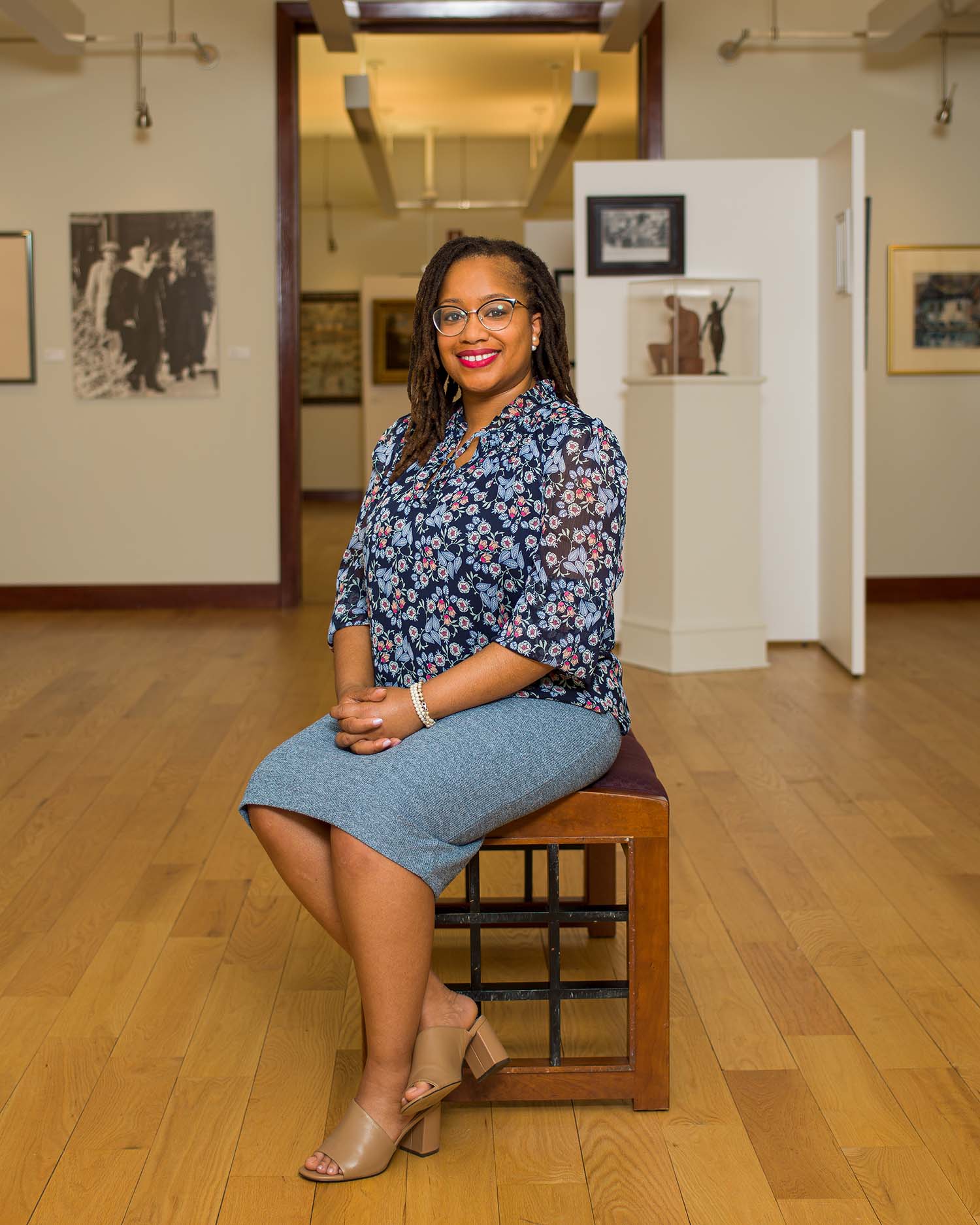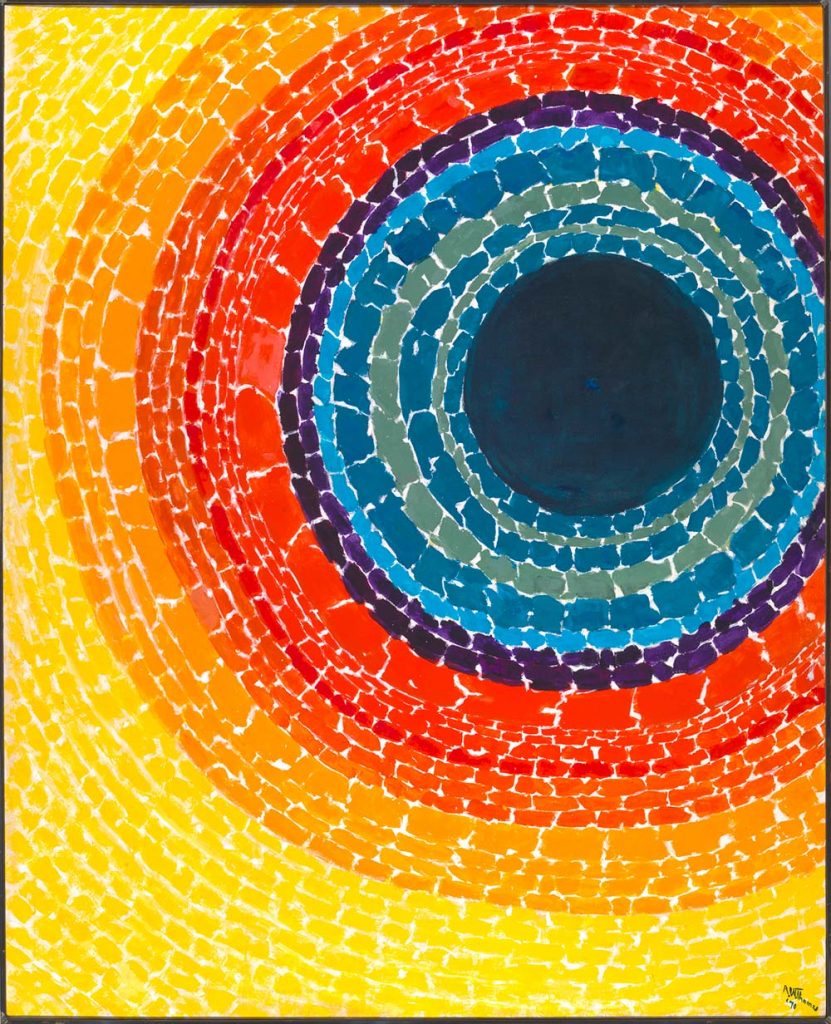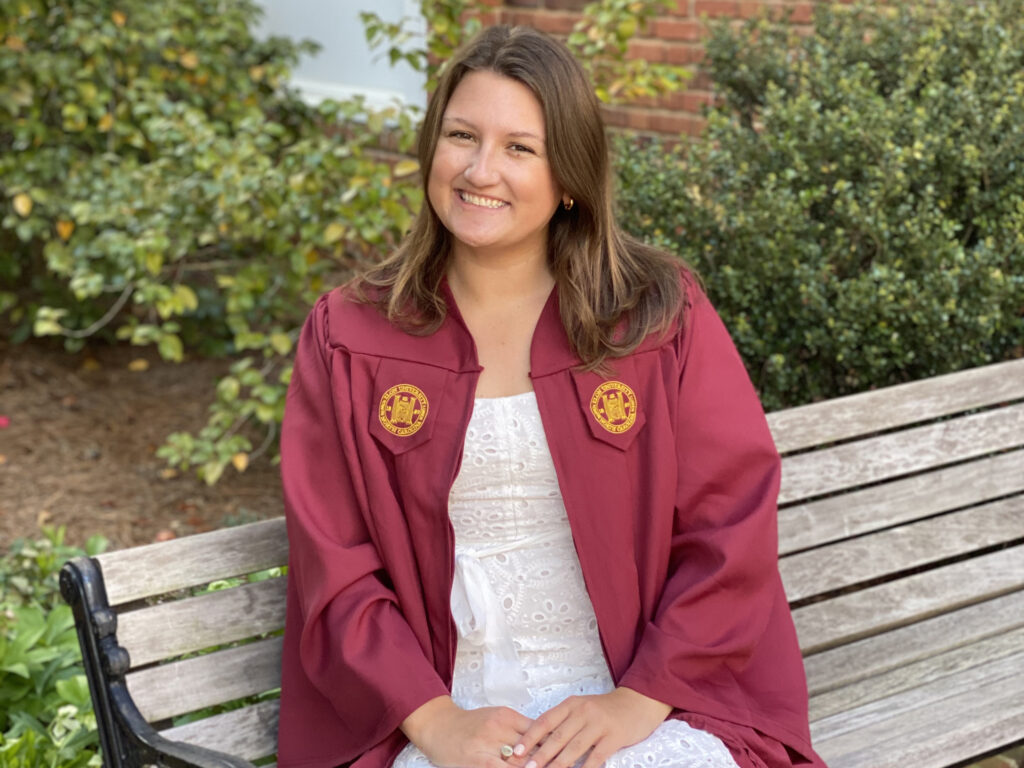
Melanee C. Harvey
a Scholar of Black Arts Motion Artists
“I’m actually obsessed with mentoring,” says Melanee C. Harvey, an assistant professor of artwork historical past at Howard College. “I need to proceed to be an instance for others that you could pursue graduate levels. And in artwork historical past, it’s attainable.” Picture by Jimell Greene
They’re decided to make use of their expertise, affect, and positions to assist make their enterprise, group, and world extra inclusive. They’re breaking obstacles—after which reaching again to assist these behind them overcome the identical hurdles. They’re BU alumni, school, and employees—of each race, ethnicity, age, and gender—and they’re “Opening Doorways” for the subsequent technology.
Melanee C. Harvey was an undergraduate at Spelman School when she determined she needed to be a historian of African American artwork—like one in every of her visitor professors.
“Simply to see a Black girl embody what an artwork historian does—I used to be, like, that’s what I need to be,” Harvey remembers. The visitor professor was Lisa Farrington, a number one scholar of African American artwork who would go on to turn out to be affiliate dean of superb arts at Howard College. “I keep in mind very audaciously going as much as her someday after class and saying, ‘I’m making use of for graduate faculty and I simply need you to know, I’m going to be such as you someday.”
As we speak Harvey (GRS’17), who holds a grasp’s and PhD in American artwork and architectural historical past from BU, is a scholar of Black Arts Motion artists, an assistant professor of artwork historical past at Howard College, and programming coordinator and committee chair of the college’s James A. Porter Colloquium on African American Artwork and Artwork of the African Diaspora. The main discussion board for students and curators within the discipline, the colloquium is known as for the pioneering Howard professor referred to as the daddy of African American artwork historical past.
A 2020-2021 Paul Mellon Scholar on the Nationwide Gallery of Artwork Middle for Superior Research within the Visible Arts (CASVA), Harvey is engaged on a ebook on the artwork and architectural historical past of the African Methodist Episcopal denomination. She can be contributing to a forthcoming anthology on American artwork (Unforgettable: American Artists Reconsidered, Berkeley: College of California Press, 2022) alongside her former BU advisor, Patricia Hills, a School of Arts & Sciences professor emerita of American and African American artwork, and a number of other different of Hills’ former doctoral college students.
Harvey is a part of a staff of students—together with Farrington, the function mannequin who grew to become her mentor—at Howard and CASVA who’re working, with help from the Andrew W. Mellon Basis, to create a pipeline for careers in museums and arts-related organizations for HBCU (traditionally Black schools and universities) college students and people from different underrepresented establishments.
Bostonia talked with Harvey about how she got interested within the historical past of African American artwork, the function Farrington and different mentors have performed in her profession, and her present function as a mentor to her college students.
Q&A
Melanee C. Harvey
Bostonia: Are you able to discuss how your early childhood in Dayton, Ohio, formed you?
Melanee C. Harvey: Rising up in Dayton, I had entry to the Nationwide Afro-American Museum and Cultural Middle, which is about 40 minutes from Dayton. My dad, the Rev. Louis Charles Harvey, was president of Payne Theological Seminary, one of many few African American seminaries in the US. The seminary is actually down the road from Wilberforce College, the oldest HBCU within the nation; each establishments are run by the African Methodist Episcopal denomination, which I’ve studied in my work.
Rising up on this area—understanding the historical past, the seriousness, I feel, of this legacy that we uphold—was a really huge a part of me taking educational life critically, and understanding it as a form of cultural work for generations to return.
Bostonia: What bought you curious about artwork?
Melanee C. Harvey: I credit score my mom, Dr. Sharon Jefferson, with shaping the aesthetics of our home setting after I was rising up. She embellished our house with framed reproductions by Claude Monet and by Varnette Honeywood, an African American artist who graduated from Spelman. A number of her work offers with African American life. The 2 photos I keep in mind—one in every of three ladies in a magnificence store doing one another’s hair, and one in every of a Black church, with the choir and the minister and the viewers.
One of many latest tasks I labored on was desirous about the lifetime of Alma Thomas, who was the primary Black girl to have an exhibition on the Whitney Museum. She was a schoolteacher most of her life, and she or he would all the time encourage her college students to not be outlined by the violence and racial discrimination. She would inform them, “It’s a must to create the sweetness that you just need to see in your world.”

And I feel that could be a mantra that extends throughout generations of African Individuals. How do you cope with a world that’s pushing you right into a field? A method you do that’s by controlling your individual inside area.
I feel that there’s this multigenerational custom of African Individuals investing within the aesthetics of their house as a form of sanctuary area, a reprieve from the issues that they encounter on this planet.
Bostonia: What was your expertise at Spelman School like?
Spelman remodeled my perspective. My first yr I took a required course on the African diaspora that introduces college students to a number of the foundational historic writings of African American tradition. It utterly shifted my life. It gave me an understanding that there was literature, and a philosophical solution to view the world, that didn’t depart me feeling victimized however that as an alternative empowered me. It simply lit me on hearth.
We might learn Audre Lord and Patricia Hill Collins, and I needed to be a type of ladies who’re developing with new methods to view the world that will shift how we perceive our situation. The famend historian Anne Bailey taught the category. She remodeled my life as a result of I might see myself in her.
Then, I feel it was my first semester, I took artwork appreciation and it was simply over for me. I knew that I needed to double main in African historical past and artwork, with a concentrate on artwork historical past. I simply really feel so indebted to Spelman for every little thing they launched to me. We might do class journeys throughout the road to Clark Atlanta College, the place we might get to see these lovely murals [Art of the Negro] painted by Hale Woodruff that documented the evolution of Black aesthetics. [Woodruff, who was the state of Georgia’s first art professor and founder of the Atlanta University art department and permanent collection, painted the murals in 1950 and 1951].
My sophomore yr at Spelman, as a result of I used to be concerned with analysis, I used to be chosen to be part of the United Negro School Fund Mellon Mays program, which introduced college students from HBCUs collectively at Emory College to arrange them to pursue increased levels and return to the academy as school.
I additionally did one other graduate faculty preparatory program, the Institute for the Recruitment of Lecturers, at [Phillips] Andover Academy. I knew I needed to be a professor at an HBCU, that I needed the subsequent technology and future generations of Black students to see me in the identical approach that I noticed Lisa Farrington.
Bostonia: And you then got here to BU…
I had the good luck of getting Patricia Hills, who’s a feminist scholar of African American artwork and is now a professor emerita, actually imagine in me as a scholar. She was devoted to taking critically the purposes of minority college students. Once I bought to BU, there was one different African American pupil forward of me in this system. I feel I used to be the second African American pupil within the [history of art and architecture] program.
There’s the social dynamic that comes together with the form of mental competitiveness in graduate faculty that minority college students coming from an HBCU aren’t all the time ready for. It takes some time to get your footing to have the ability to navigate that. Pat [Hills] created this group of scholars of coloration who might help one another.
She additionally ensured that I had the right skilled alternatives. I spent two years working within the Boston College artwork galleries. I realized set up exhibits, do mortgage agreements, these very sensible issues.
Pat additionally linked me with the African Research Middle. I used to be a graduate assistant there, and that gave me the chance to curate historical past exhibitions and work with students like Linda Heywood. I did wrestle, acclimating to Boston—you recognize, coming from Atlanta, a majority African American metropolis—however I had so many good alternatives earlier than me that it was identical to, how can I not benefit from this?
I’d gone to Spelman and I grew to become a form of specialist in Black artwork. And you then come to a spot like Boston College, the place, “Omigod, you don’t know John Singleton Copley? You don’t know John Singer Sargent?” And I’m like, “I don’t, I’m going to study. However are you aware Romare Bearden [Wheelock’34]? Are you aware Justin Morris?” A number of my white friends, they knew the artwork historic language and canon that I feel on the time BU was selling, and I’m coming in with a complete different set of names and information.
So I had a variety of bumps within the street and obstacles the place I needed to reveal perseverance. On the similar time, Patricia Hills had imparted to me simply how a lot the sector of African American artwork wanted to be developed and superior. And I knew I needed to be part of that.
Bostonia: How did you get to Howard?
I discussed my curiosity in Howard to Pat, and she or he advised me that Howard has an annual artwork historical past convention, the James A. Porter Colloquium—it’s the oldest steady discussion board for African American artwork—and why don’t you test it out? The division paid for me to go all the way down to D.C. and take part. I fell in love. I used to be, like, I need to be at this place. A number of the seminal thinkers by way of African American artwork from the twentieth century taught at Howard. Alain Locke, who led the Harlem Renaissance, taught at Howard.
As the previous chair of the division of artwork, James A. Porter was the primary particular person to write down a complete textbook on African American artwork. I aspired to, and nonetheless aspire to, make an identical impression as have Alain Locke and James Porter.
Bostonia: How do you consider your function as programming director for the colloquium?
I’m all the time desirous about that new graduate pupil who’s simply wrapping up their dissertation and desires that chance to publicly current their work, or desirous about that new cutting-edge artist or artwork historian who will carry a complete new earth-shattering methodology to the artwork group and our college students at Howard.
Bostonia: Are you able to discuss your work together with your mentor, Lisa Farrington, now Howard’s Gallery of Artwork director, to create pathways to careers in museums and different arts organizations for Black college students and different minorities?
Dr. Farrington and the dean of the Middle for the Superior Research of Visible Arts, Dr. Steven Nelson, got here up with this sensible concept of beginning a two-year paid internship for Howard college students that will give them entry into the museum world. At museums, you’re bringing all several types of expertise, whether or not it’s HR expertise, budgeting expertise, fundraising writing, public relations—all our college students can profit from all of that. That’s a program I’ve been engaged on creating with our companions on the Nationwide Gallery for the previous yr.
Bostonia: So that is the way you’re opening doorways for a brand new technology.
Sure, and I can’t converse extremely sufficient concerning the work Howard has achieved even earlier than this program. A few of my college students have gotten wonderful alternatives—one now works at Swann Public sale Galleries as an artwork administrator. One other graduated from Howard and went on to get her grasp of artwork at Tulane. Different college students have gone instantly into museum administration work. I’ve a pupil who’s working on the MFA in Boston.
I’m actually obsessed with mentoring. I need to proceed to be an instance for others that you could pursue graduate levels. And in artwork historical past, it’s attainable. Take a look at me, I did it. And I’m the second or third technology of Black individuals who have been doing this. Once I take into consideration my college students preserving me up on what they’re doing, it lets me know that I’ve made some sort of impression on their life, in the identical approach that Dr. Lisa Farrington and Patricia Hills and others have made a convincing impression on my life.
This Collection
Additionally in
Opening Doorways
Collection house
